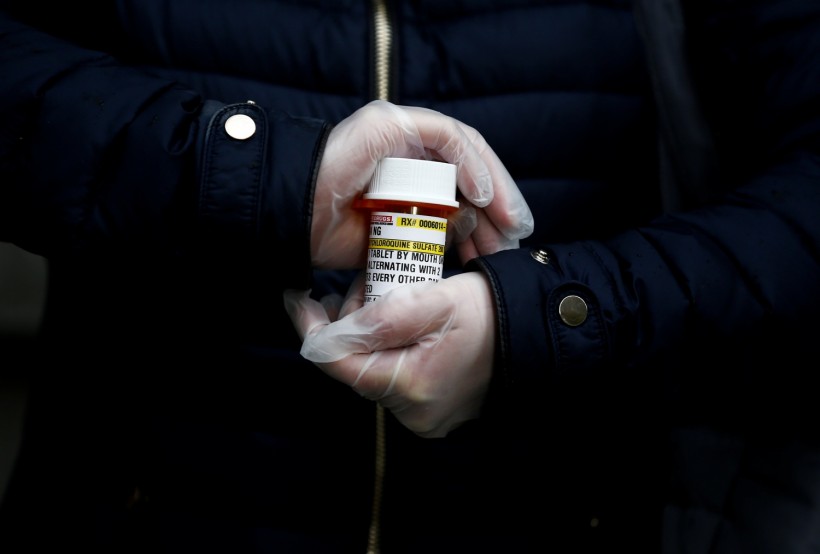Specialists warned facilities might face a scarcity of trained health care people in using ventilators as the United States waits for a fleet of medical equipment to treat COVID-19 patients.

Laura Ng, who has lupus and had to recently call at least five pharmacies before she could find a place to fill her hydroxychloroquine prescription, is photographed in Seattle, Washington, U.S. March 31, 2020. Ng said she is worried about the supply due to interest in the drug as a treatment for coronavirus disease (COVID-19).
"If you have a thousand more ventilators magically appear, do you have the 20 Intensive Care Unit doctors, 300 ICU nurses, 150 respiratory therapists, and all personal protective equipment needed to support 1,000 new ventilators?" Dr. Doug White, an intensive care physician with the University of Pittsburgh School of Medicine, told ABC News. Ventilators, according to White, don't run themselves.
More healthcare workers needed
Personnel particularly trained to treat patients with ventilators is just one of the latest possible shortages that officials are facing as they struggle in coronavirus fight.
New York Gov. Andrew Cuomo, on Monday, Mar. 30, asked help to other states for shipping as many healthcare people as they can to assist the strained system in the region.
There are about 6,800 licensed respiration therapists in New York, according to the state's Education Department, which handles professional licensing. They are professionals who intently display patients and adjust treatments using the lifesaving ventilators to breathe.
Health officers remain worried about employee shortages despite the number of respiratory therapists, anesthesiologists, physicians, and tens of hundreds of volunteer health care employees.
New York counts more than 75,000 cases of coronavirus infections so far, according to Cuomo. Over 186,000 people have tested positive for the virus in the United States, and at least 4,000 have died in the country, Johns Hopkins University said.
The standard care for a ventilated patient, according to ABC News, include round-the-clock care from a team of nurses and respiratory therapists, under the supervision of an intensive care doctor.
Due to the influx of patients needing intensive care service, one ICU doctor handles four times the number of ventilated patients they typically do. The practitioner also handles a group of non-ICU specialists working under them.
It's a strained machine that could buckle even similarly if large numbers of front-line nurses and medical doctors contract the coronavirus due to shortages of the private protective system.
White said the situation would likely end up in a lower quality of care, which is why the standard of care changes in an emergency. "Critical care physicians are trained in respiratory and multi-organ failure in a way that no other specialty is," he added.
He explained the treatment of ICU patients would change when ICU physicians are transitioned to manage a group of non-ICU doctors.
ALSO READ: Coronavirus: An Irish Hospital Hires Robots to Help Mater Nurses in Fighting COVID-19
Doctors worry about drug shortages
At Elmhurst Hospital in Queens in New York City, said to be the "ground zero" of infections inside the U.S., the struggle isn't always a scarcity of ventilators or even healthcare workers. The experts expressed their concern over medications used to sedate patients when being intubated, alongside the equipment used to deliver the one's pills.
An intensive care physician told ABC News their hospital is facing drug shortages, including the ones used to sedate patients.
"If you aren't sedating [the patient] enough, you always [place] someone [at risk of] self-excavating," the physician explained. Which means one may rip the tube out of themselves because they're too awake.
Patients maintain to take sedatives and ache relievers to hold them asleep while having the tube to save themselves from fighting against both the breathing tube and the ventilator.
'Tsunami of patients' are seen
With many COVID-19 patients requiring ventilators for weeks, some health officials are worried that the nation's delivery of drugs won't be enough to help the country sustain the outbreak.
Dr. Erin Fox, who investigates drug shortages from hospitals, told ABC News that medicines are running in brief supply to support the incoming tsunami of patients.
"We see a tsunami of patients coming our way, and we don't see a tsunami of drug availability coming our way. It's frightening to think, you might not have enough remedy," she said.
Experts worry that a prolonged international outbreak could extend the global pharmaceutical supply chain. The situation would force countries to fight among each other for resources as numerous states have been forced to do for protective gadgets in the country.
Dr. Michael Ganio, one of the American Society of Health-System Pharmacists, told ABC News the pharmaceutical companies "don't have the drug supply to match all this surge capacity that's being built."









